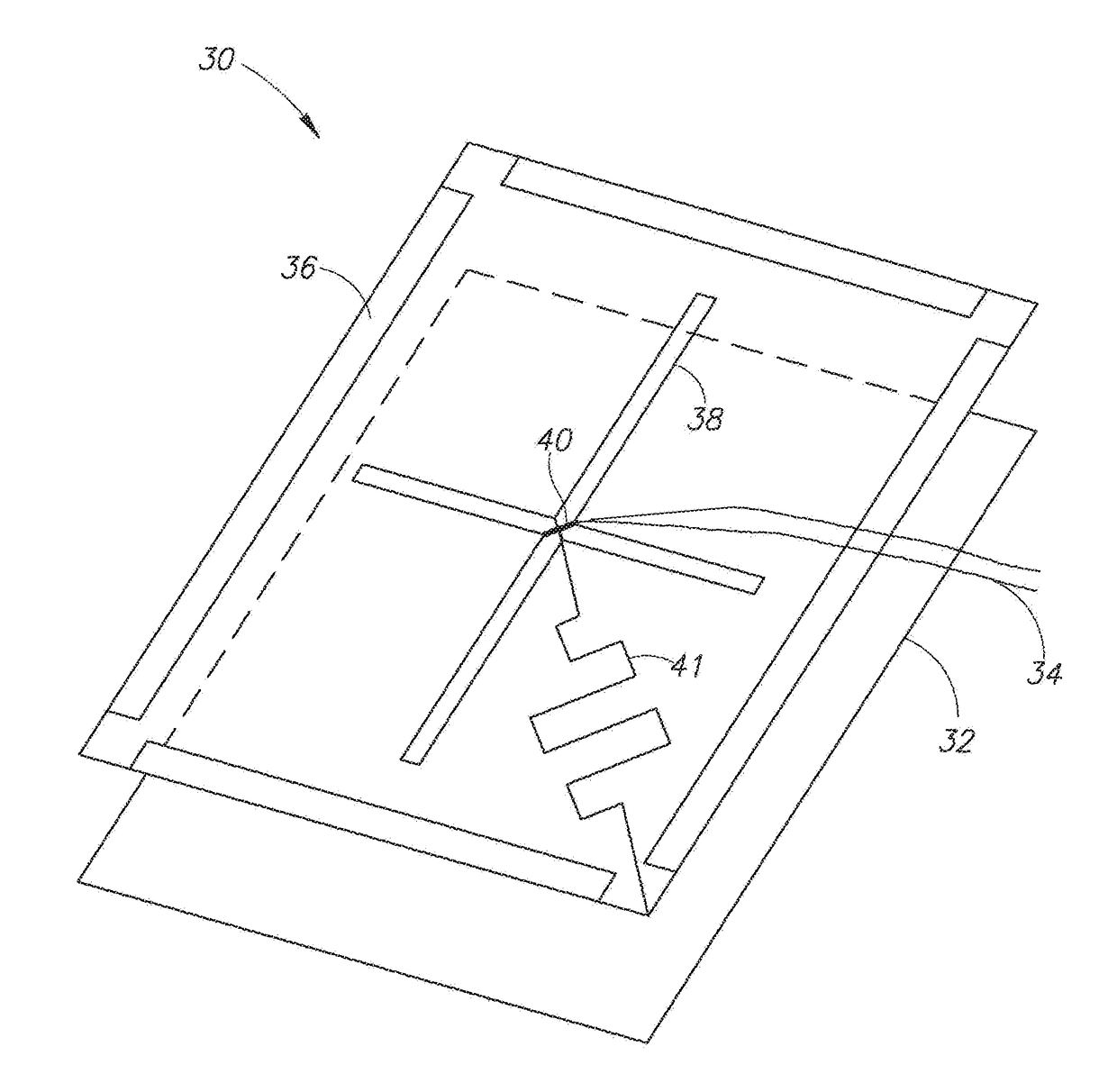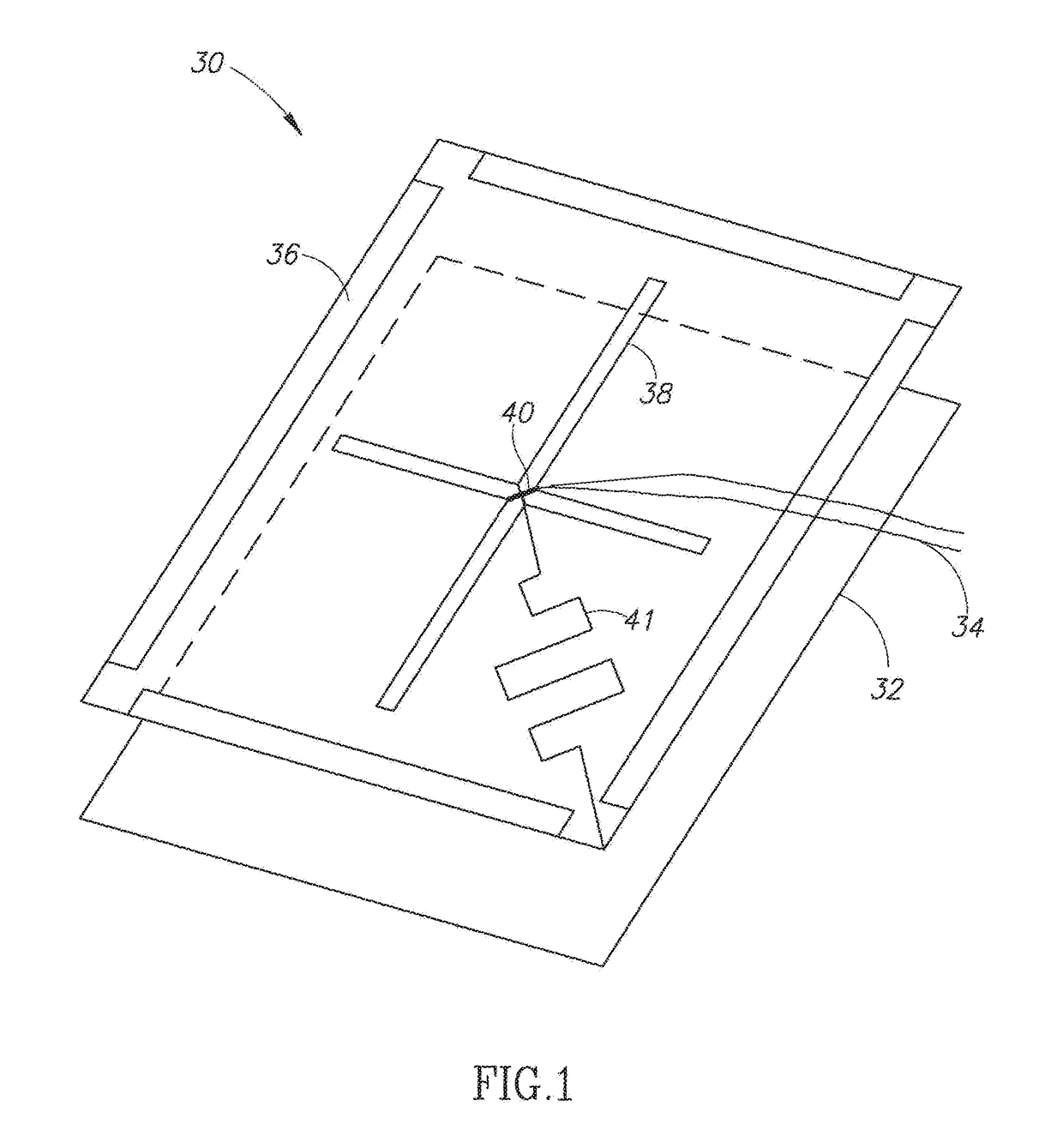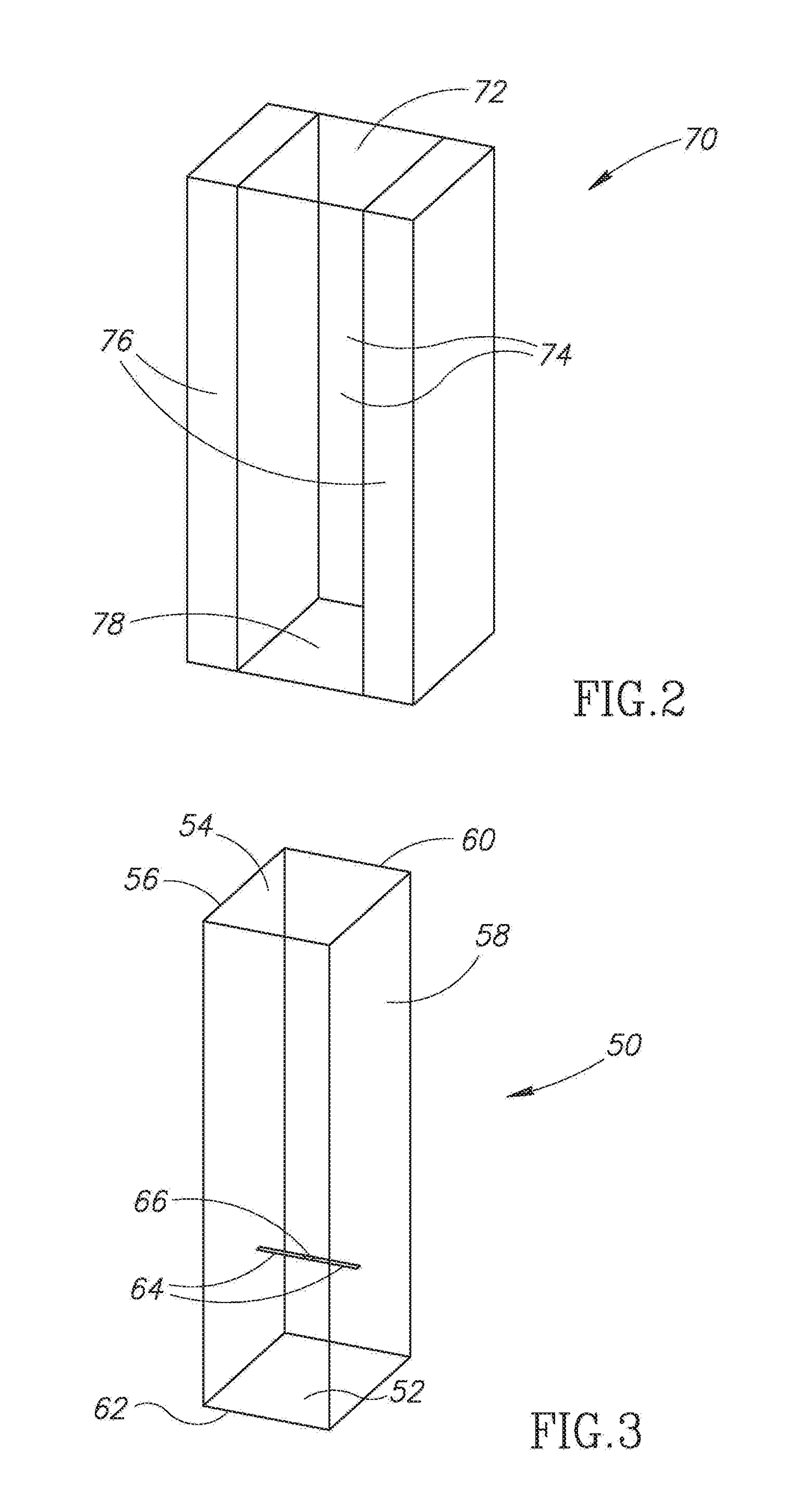Method of simulating the absorption of plane waves using FEM software tools
a software tool and plane wave technology, applied in the field of electromagnetic wave imaging, can solve the problems of radiation detectors, thz detectors of the past, difficult and expensive, etc., and achieve the effect of estimating the efficiency of visualization
- Summary
- Abstract
- Description
- Claims
- Application Information
AI Technical Summary
Benefits of technology
Problems solved by technology
Method used
Image
Examples
Embodiment Construction
[0021]The present invention relates to the field of electromagnetic (EM) wave imaging by estimating the efficiency of visualizing via detection of electromagnetic radiation irradiated or reflected from all objects in the imager's field of view. The detection of electromagnetic waves is achieved using several techniques, e.g., antenna, bolometers, photodiodes, etc. Each detection technique is modeled and designed using a different method, applicable to its physical nature. Antenna are mainly characterized by their far field radiation characteristics (i.e. directivity) and their impedance matching (i.e. realized gain), with modeling performed using 3D electromagnetic solvers for specific excitations. Photodiodes are mainly characterized by their responsivity (i.e. diode current per illumination power) and the diode internal resistivity and capacitance, with their models relying on measurement based equations.
[0022]To illustrate the principles of the invention, an example dipole antenn...
PUM
| Property | Measurement | Unit |
|---|---|---|
| distances | aaaaa | aaaaa |
| reflection coefficient | aaaaa | aaaaa |
| impedance | aaaaa | aaaaa |
Abstract
Description
Claims
Application Information
 Login to View More
Login to View More - R&D
- Intellectual Property
- Life Sciences
- Materials
- Tech Scout
- Unparalleled Data Quality
- Higher Quality Content
- 60% Fewer Hallucinations
Browse by: Latest US Patents, China's latest patents, Technical Efficacy Thesaurus, Application Domain, Technology Topic, Popular Technical Reports.
© 2025 PatSnap. All rights reserved.Legal|Privacy policy|Modern Slavery Act Transparency Statement|Sitemap|About US| Contact US: help@patsnap.com



